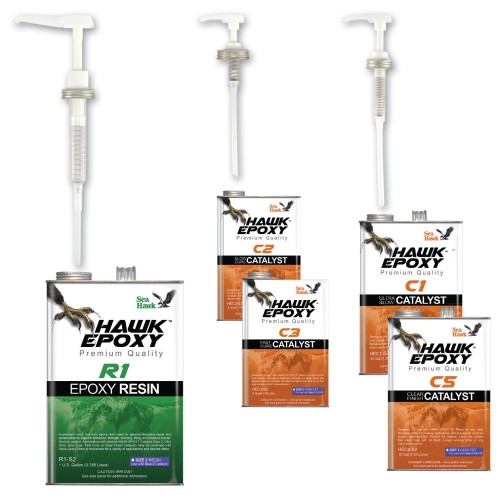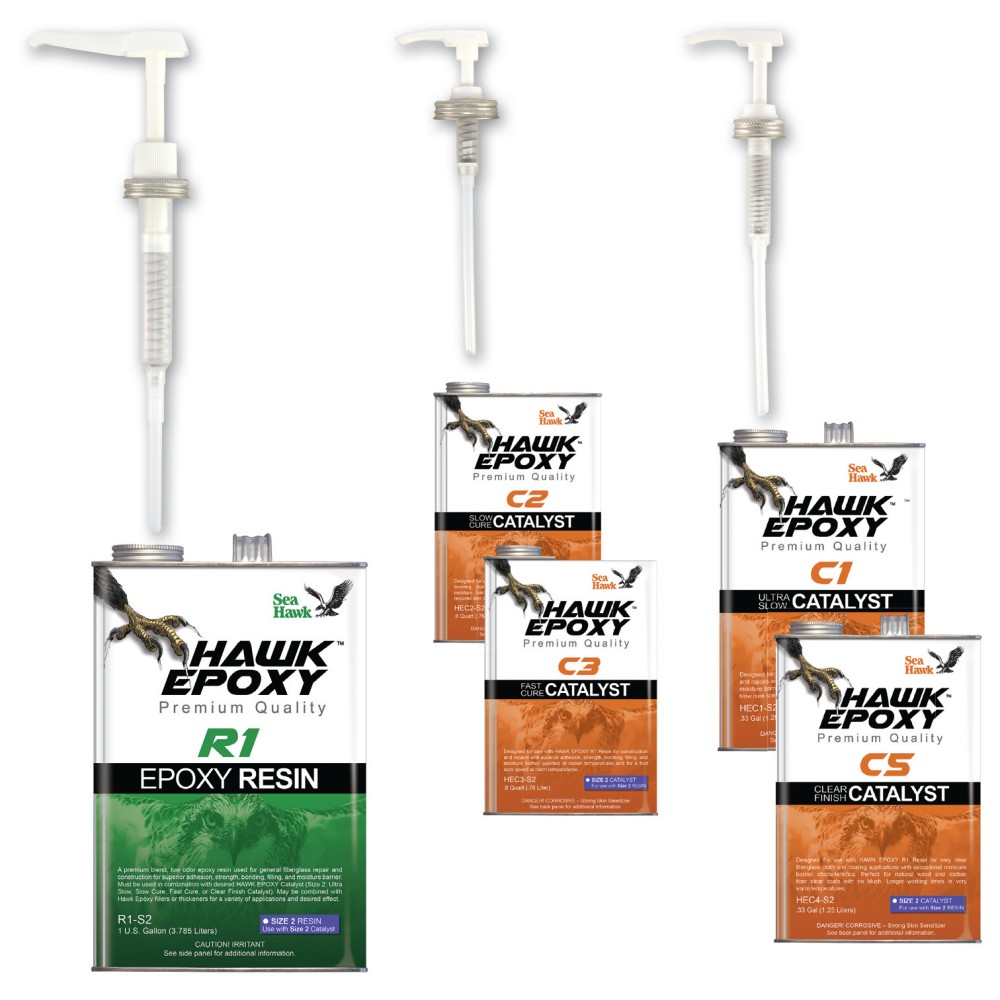
Hawk Epoxy Pump Set, 30-KT
-
Boat Bottom Paint
- Top Performing Bottom Paint
- Self-Polishing-Ablative Bottom Paint
- Hard Bottom Paint
- Hybrid Bottom Paint
- Water Based Bottom Paint
- Aluminum Safe Bottom Paint
- Bottom Paint Primers
- Specialty Marine Coatings
- Outdrive Paint
- Sea Hawk Paints
- Blue Water Bottom Paints
- Interlux Bottom Paint
- Pettit Bottom Paint
- Bottom Paint Remover
- Aquagard Bottom Paints
- Cleaners-Reducers-Solvents
- Boat Paint
- Boat Zincs
- New Items and Specials
- Boat Bottom Paint3
- Fiberglass and Gel Coat Repair
-
Topside Boat Paint
- Above or Below the Waterline
- Aluminum Boat Paint
-
Awlgrip Marine Paint
- Awlgrip Polyester Urethane Topcoat
- Awlcraft 2000 Acrylic Urethane Topcoat
- Awlgrip Awlcraft® SE Topcoat
- Awlgrip HDT
- Awlcraft 3000
- Awlgrip Converters
- Awlgrip Reducers and Activators
- Awlgrip Primers/Sealers
- Awlgrip Fairing/Surfacing
- Awlgrip Awl-Prep Wipe Down Solvents
- Awlgrip Corrosion Inhibiting Surface Treatments
- Awlgrip Brightwork, Varnish, Interior Wood
- Awlgrip Auxiliary Products
- Awlgrip Maintenance Products
- Camouflage Boat Paint
- Blue Water Topside Paints
- Duralux Marine Paints
- Marine Enamels
- Interlux Topside Paint
- Pettit Easypoxy
- Adhesives and Sealants
- Teak Oil and Wood Restoration
- Boat Paint Supplies
- Resins
- Cleaners and Polish
- Manufacturers
- Propeller and Running Gear Coatings
Your shopping cart is empty!
Product Description
- One R1 Epoxy Resin pump
- One C2 & C3 Hawk Epoxy Catalyst pump
- One C1 & C5 Hawk Epoxy Catalyst pump
- Size 1 pump extension tubes for use with Size 1 containers.
- Hawk Epoxy Pump Kit Manual

Converting the Pumps for Size 1 Containers
Step 1: Identify correct pumps by the stickers on the pump heads.
Step 2: Remove the original extension tubes and save for later use on Size 2 Resin and Catalyst.
Step 3: Install the Size 1 Pump Extension Tubes that are provided with the Pump Kit.
Step 4: Attached the pumps with the Size 1 Extensions to the Size 1 Resin and Catalyst cans.
Step 5: Prime the pumps. Refer to priming directions on reverse side.

Priming the Hawk Epoxy Pumps
For accurate measuring, the Hawk Pumps must be primed to remove any air that is in the pump tubes. Place a container under the pump nozzle when priming the pump to catch extra resin or catalyst that will be discharged during priming. Then push down on the pump head until it can go down no further and release until the pump head returns to its full upright position, and continue doing so until you get a steady stream of product during the entire stroke. This ensures all air is removed from the pump tubes and the pump is properly primed.
Accurately Measuring Resin & Catalyst
After the Hawk Pumps are properly primed, dispense the R1 Epoxy Resin and Catalyst into the same container using full strokes of the pump heads from top to bottom AND with an equal number of strokes for the R1 Epoxy Resin and Catalyst. Partial pump strokes will make the Resin to Catalyst ratio incorrect, cause the epoxy to cure improperly and may diminish the strength of the epoxy. It is recommended to mix a small “test sample” of Resin and Catalyst and test the cure time to ensure the pumps are dispensing at the correct ratio. When the Hawk Pumps are primed and used properly, you should run out of Hawk Epoxy R1 Resin at approximately the same time you run out of Hawk Epoxy Catalyst. If you run out of Resin before you run out of Catalyst, or vice-versa, there may be a problem with the pumps. The first thing to check is the distance between the pump head and the pump screw cap and verify that the measurements are as follows:

Pump Storage and Cleaning
Store upright at room temperature in a dry area. Re-priming the Hawk Pumps may be necessary after a prolonged storage and dried resin or catalyst may form at the pump openings. To remove dried product from pump openings, use a small nail to reopen spout.
Using Hawk Epoxy Pumps in Cooler Weather
Cooler temperatures signifi cantly increase the viscosity of Hawk Epoxy R1 Resin and Catalyst and requires greater downward force to push through the pumps. The pumps down AND up movement will be noticeably slower, so allow enough time for the pump head to go back to the full upright position before pushing another stroke. Do not use excessive pressure when pumping. For easiest dispensing and mixing, keep product at room temperature.





